
How to Use Soil Moisture Sensor Module: Examples, Pinouts, and Specs
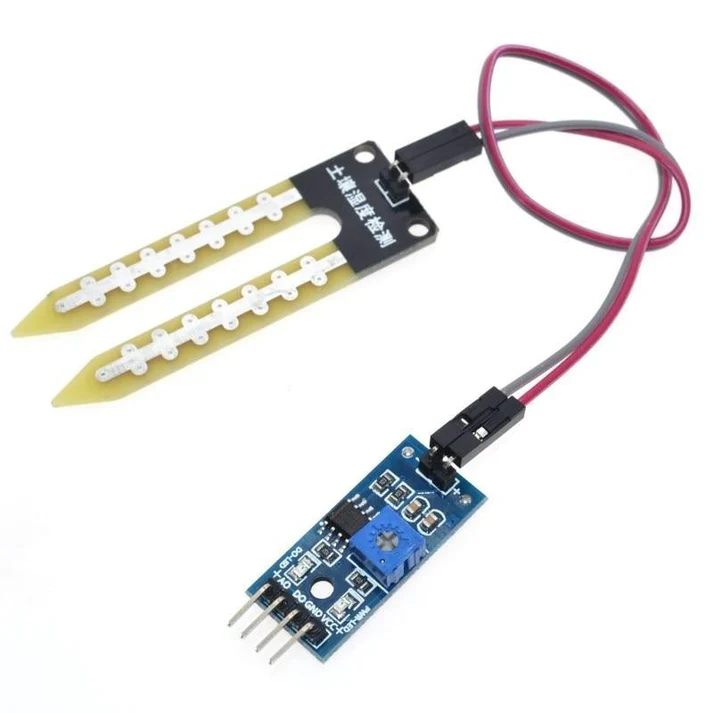
 Design with Soil Moisture Sensor Module in Cirkit Designer
Design with Soil Moisture Sensor Module in Cirkit DesignerIntroduction
The Soil Moisture Sensor Module is a device used to measure the volumetric water content in soil. It typically consists of two probes that are inserted into the soil to measure the resistance, which correlates to moisture levels. This sensor is widely used in agricultural projects, automated irrigation systems, and environmental monitoring.
Explore Projects Built with Soil Moisture Sensor Module
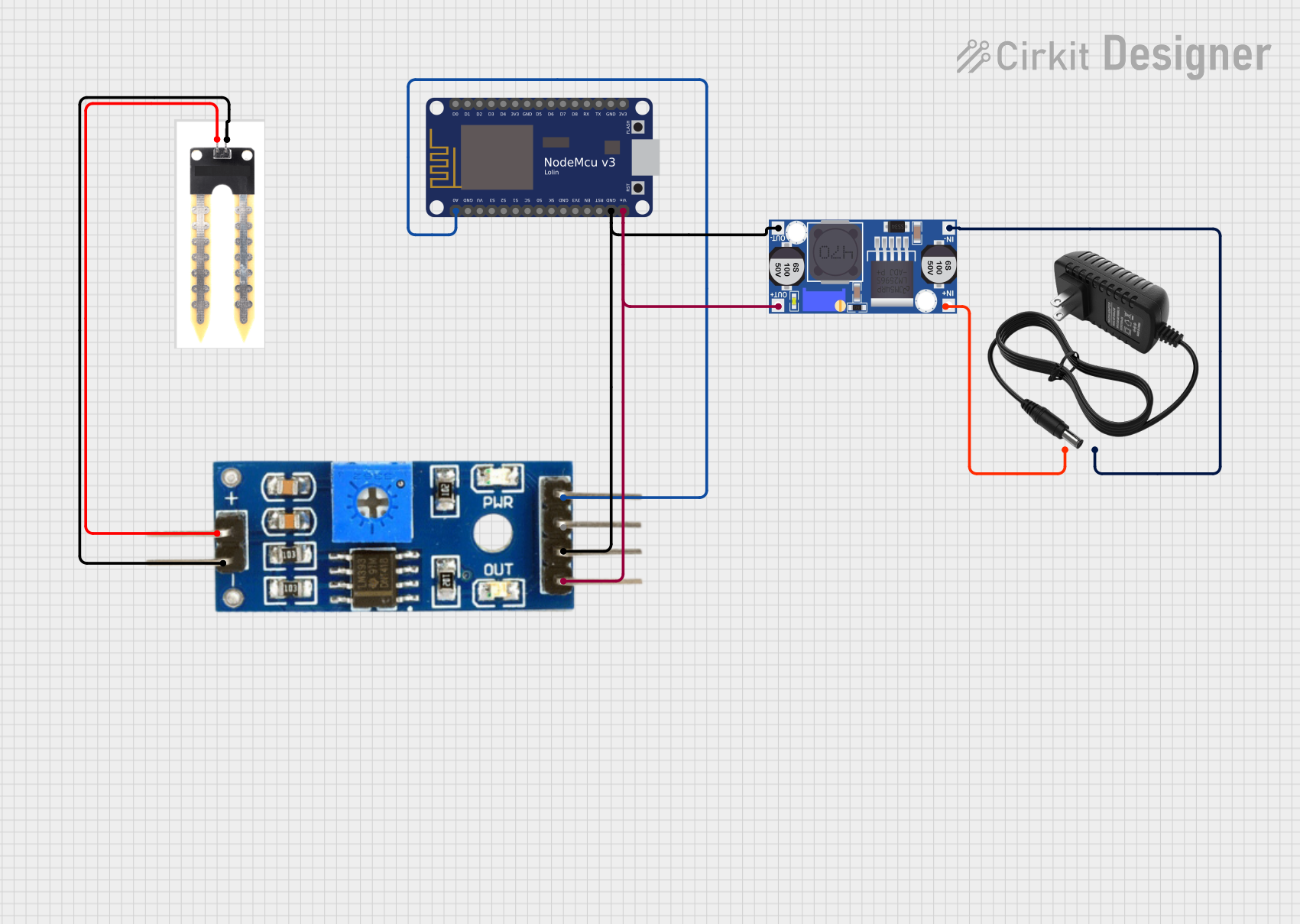
 Open Project in Cirkit Designer
Open Project in Cirkit Designer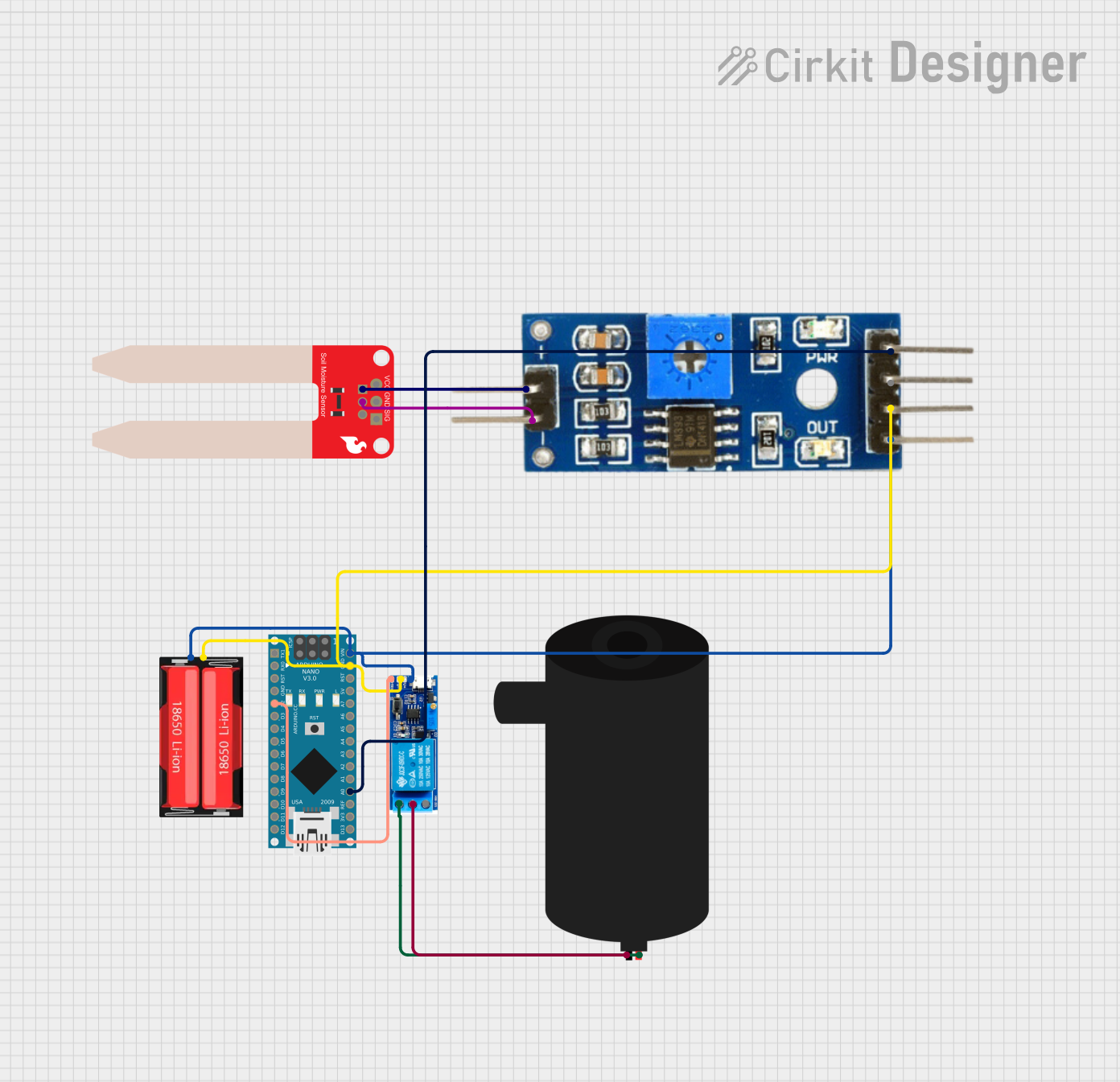
 Open Project in Cirkit Designer
Open Project in Cirkit Designer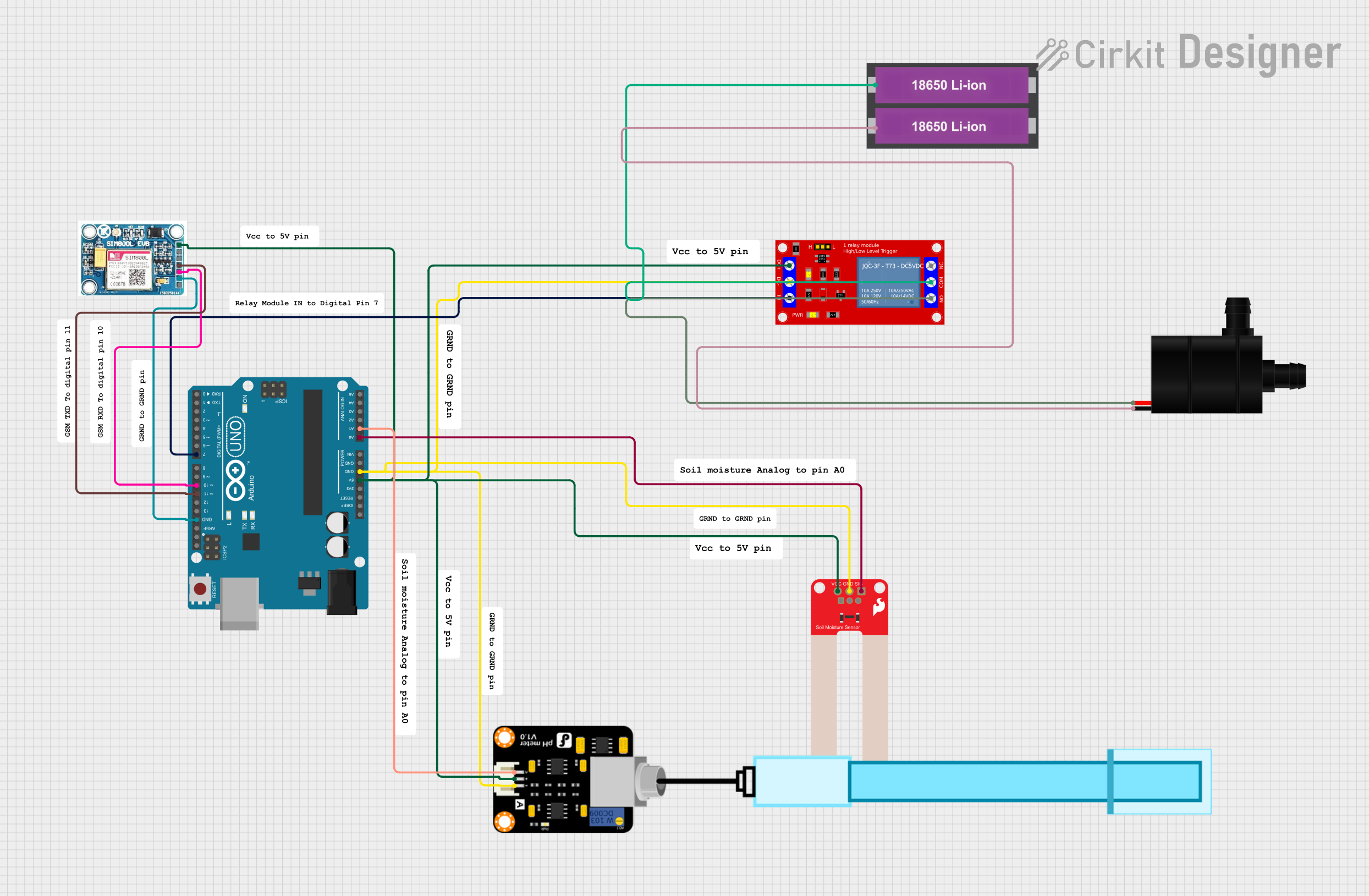
 Open Project in Cirkit Designer
Open Project in Cirkit Designer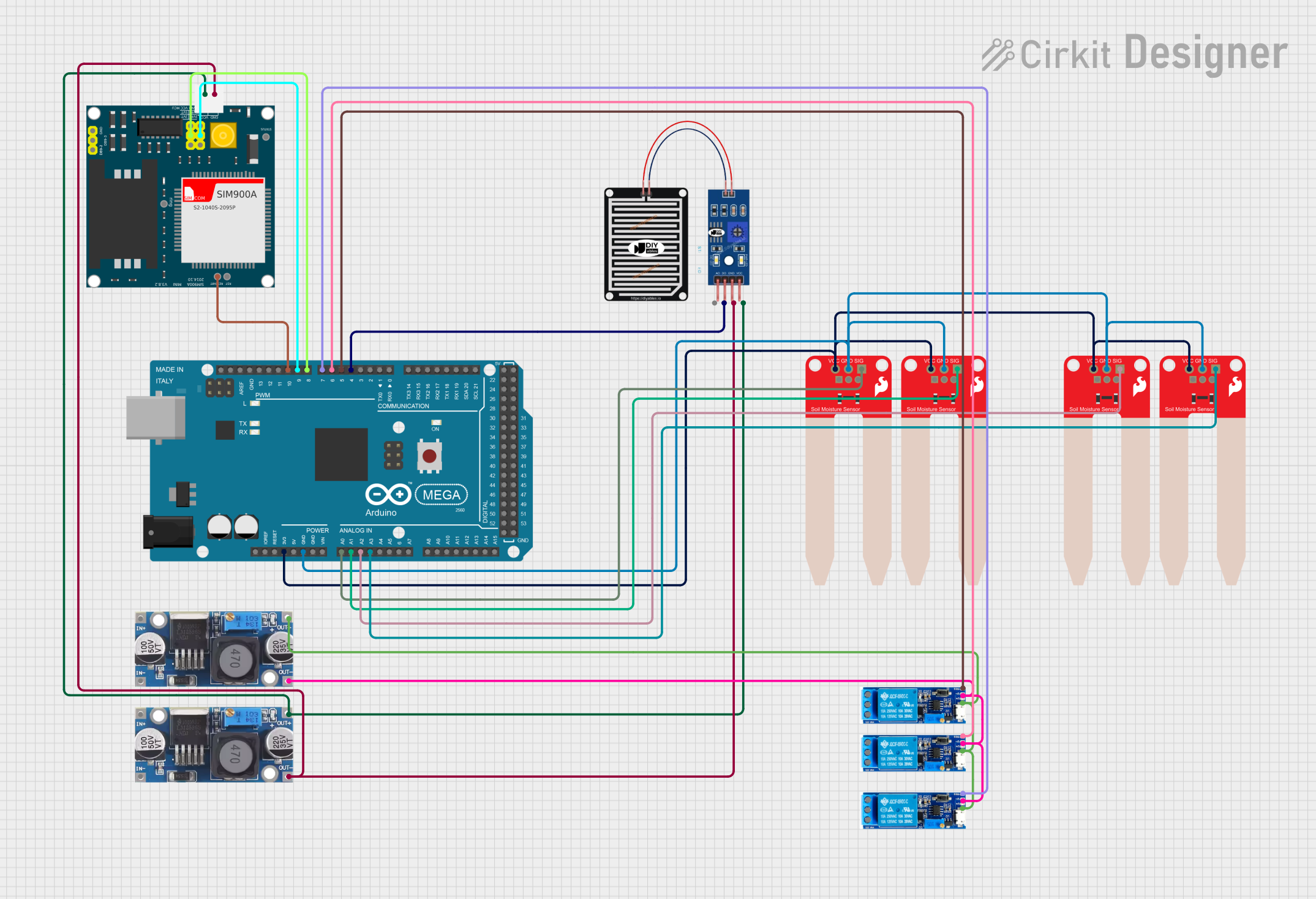
 Open Project in Cirkit Designer
Open Project in Cirkit DesignerExplore Projects Built with Soil Moisture Sensor Module

 Open Project in Cirkit Designer
Open Project in Cirkit Designer
 Open Project in Cirkit Designer
Open Project in Cirkit Designer
 Open Project in Cirkit Designer
Open Project in Cirkit Designer
 Open Project in Cirkit Designer
Open Project in Cirkit DesignerCommon Applications and Use Cases
- Agriculture: Monitoring soil moisture levels to optimize irrigation.
- Gardening: Ensuring plants receive the right amount of water.
- Environmental Monitoring: Tracking soil moisture for research purposes.
- Smart Home Systems: Automating garden watering systems.
Technical Specifications
Key Technical Details
- Operating Voltage: 3.3V - 5V
- Output Voltage Range: 0V - 4.2V
- Current Consumption: < 20mA
- Interface: Analog and Digital
- Dimensions: 60mm x 20mm x 5mm
Pin Configuration and Descriptions
| Pin | Name | Description |
|---|---|---|
| 1 | VCC | Power supply (3.3V - 5V) |
| 2 | GND | Ground |
| 3 | A0 | Analog output (voltage proportional to moisture) |
| 4 | D0 | Digital output (high/low based on threshold) |
Usage Instructions
How to Use the Component in a Circuit
Powering the Sensor:
- Connect the VCC pin to the 3.3V or 5V power supply of your microcontroller.
- Connect the GND pin to the ground of your microcontroller.
Reading Analog Values:
- Connect the A0 pin to an analog input pin on your microcontroller to read the moisture level as a voltage.
Using Digital Output:
- Connect the D0 pin to a digital input pin on your microcontroller. This pin will output a high or low signal based on the moisture threshold set by the onboard potentiometer.
Important Considerations and Best Practices
- Calibration: Calibrate the sensor for your specific soil type to get accurate readings.
- Placement: Insert the probes fully into the soil for consistent measurements.
- Corrosion: The probes can corrode over time, especially in wet conditions. Consider using corrosion-resistant probes for long-term projects.
- Power Supply: Ensure a stable power supply to avoid fluctuating readings.
Example Code for Arduino UNO
// Soil Moisture Sensor Module Example Code for Arduino UNO
const int analogPin = A0; // Analog pin connected to A0 pin of the sensor
const int digitalPin = 7; // Digital pin connected to D0 pin of the sensor
int sensorValue = 0; // Variable to store the analog value
void setup() {
Serial.begin(9600); // Initialize serial communication at 9600 baud rate
pinMode(digitalPin, INPUT); // Set digital pin as input
}
void loop() {
// Read the analog value from the sensor
sensorValue = analogRead(analogPin);
// Print the analog value to the Serial Monitor
Serial.print("Analog Value: ");
Serial.println(sensorValue);
// Read the digital value from the sensor
int digitalValue = digitalRead(digitalPin);
// Print the digital value to the Serial Monitor
Serial.print("Digital Value: ");
Serial.println(digitalValue);
// Delay for a second before the next reading
delay(1000);
}
Troubleshooting and FAQs
Common Issues Users Might Face
Inconsistent Readings:
- Solution: Ensure the probes are fully inserted into the soil and the connections are secure. Calibrate the sensor for your specific soil type.
No Output from Sensor:
- Solution: Check the power supply and ensure the VCC and GND pins are correctly connected. Verify that the sensor is not damaged.
Corroded Probes:
- Solution: Use corrosion-resistant probes or replace the probes periodically.
FAQs
Q: How do I calibrate the sensor? A: To calibrate the sensor, take readings from dry soil and fully saturated soil. Use these readings to map the sensor output to moisture levels.
Q: Can I use the sensor in outdoor conditions? A: Yes, but ensure the sensor is protected from extreme weather conditions and consider using corrosion-resistant probes.
Q: What is the lifespan of the sensor? A: The lifespan depends on usage and environmental conditions. Regular maintenance and using corrosion-resistant probes can extend the lifespan.
Q: Can I use the sensor with other microcontrollers? A: Yes, the sensor can be used with any microcontroller that supports analog and digital input, such as Raspberry Pi, ESP8266, and ESP32.
This documentation provides a comprehensive guide to using the Soil Moisture Sensor Module, ensuring both beginners and experienced users can effectively integrate it into their projects.